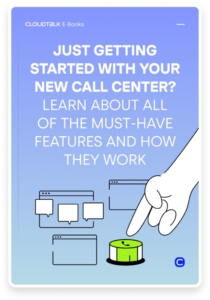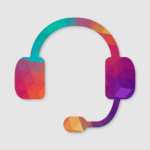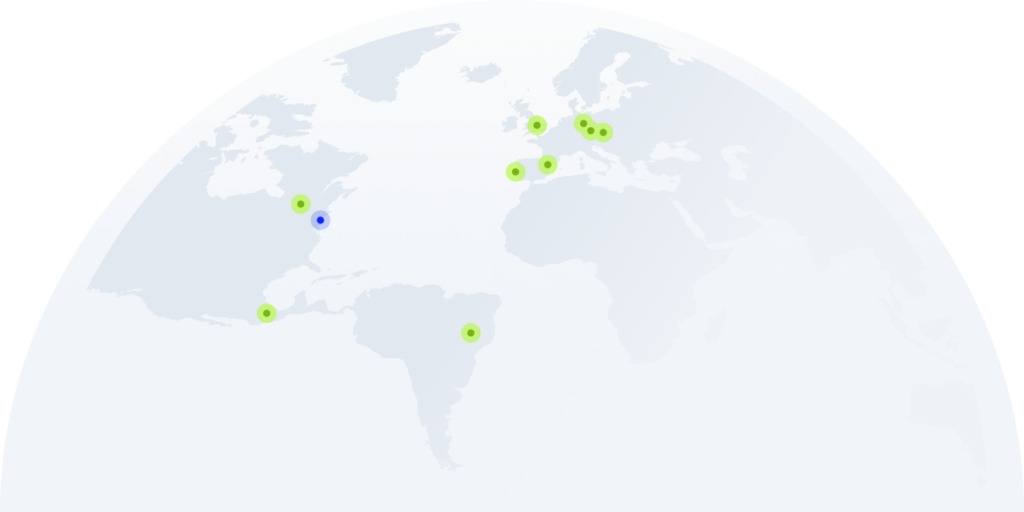The 7 Steps To Mastering Call Center
Monitoring: Practices, Tools & Benefits
According to Salesforce, 63% of B2C customers and 79% of B2B buyers believe companies need to get better at listening to feedback and catering to clients to earn their business.
That alone should be enough of an incentive to invest in call center monitoring. Especially considering that with the advent of AI, companies can evaluate 100% of their calls instead of 1-3%, which was the average prior.
In this article, we’ll discuss how call center monitoring can improve all aspects of your business – not just lead generation.
We’ll guide you through the 7-step process for achieving operational excellence through monitoring and highlight the best tools and practices to help you along the way.
Key Takeaways:
- Call center monitoring is crucial for workflow efficiency, revenue generation, and customer satisfaction.
- Modern call center monitoring methods focus on quality assurance, performance monitoring, and AI speech analytics.
- Call center monitoring software is a crucial part of call center monitoring as it allows recording, transcribing, and evaluating interactions in one streamlined solution.
What Is Call Center Monitoring?
Call center monitoring refers to tracking and evaluating all aspects of performance—not just call monitoring, which is a common misconception. It achieves this by setting and continuously monitoring various metrics and KPIs.
As with any good tool, call center monitoring can improve many aspects of your business. However, most businesses focus on augmenting workflow efficiency, revenue generation (via customer retention and acquisition), and customer satisfaction.
Many companies further supplement this process with call monitoring software, whether incorporated within their main calling solution or integrated via a 3rd party tool.
That’s because AI features like Sentiment Analytics and Custom Reporting can fill the gaps where our human brains fail and help achieve better results. Later in this article, we’ll dedicate a section covering all the best tools to help you maximize your results.
Why Is Call Center Monitoring Important?
As mentioned above, call center monitoring influences most of everything in your call center (duh!). However, there are several particular reasons why you shouldn’t underestimate the importance of call center monitoring.
- According to McKinsey, 71% of customers expect personalized service, and 76% of them will be highly unsatisfied if they don’t receive it.
- According to Accenture Venture, US companies lose $1.3 trillion in revenue to bad customer service every year.
Forbes says that 58% of US customers are willing to spend more on exceptional customer service.
What Are the Benefits of Call Center Monitoring?
- Improved Customer Experience: Quality monitoring call centers can ensure that agents deliver consistent and high-quality customer service by monitoring calls. This leads to greater satisfaction, increased loyalty, and positive word-of-mouth recommendations.
- Enhanced Agent Performance: Call monitoring provides valuable insights into agent performance, allowing supervisors to identify strengths and areas for improvement. With targeted coaching and training, agents can refine their skills, resulting in higher productivity and better outcomes.
- Compliance and Risk Mitigation: Monitoring calls helps agents follow company policies, procedures, and regulatory requirements. This reduces the risk of compliance violations, legal issues, and reputational damage for the organization.
- Data-Driven Decision-Making: By analyzing call data and customer interactions, call centers can gain valuable insights into customer preferences, behavior patterns, and emerging trends. This information can drive strategic decision-making, product development, and marketing initiatives.
- Optimized Processes: Call monitoring enables call centers to identify inefficiencies and bottlenecks. Organizations can streamline operations and enhance overall efficiency by pinpointing areas for improvement, such as long wait times or frequent transfers.
- Increased First Call Resolution: Monitoring calls allows supervisors to assess agents’ ability to resolve customer issues on the first call. By addressing root causes and providing agents with the necessary tools and resources, call centers can minimize escalations, reduce call volume, and improve customer satisfaction.
- Real-Time Feedback and Coaching: With live call monitoring capabilities, supervisors can provide immediate feedback and guidance to agents during customer interactions. This real-time coaching helps agents improve their performance on the spot, leading to faster resolution times and greater customer satisfaction.
- Employee Engagement and Satisfaction: Regular monitoring and feedback demonstrate to agents that you value their performance is and support their development. This fosters a positive work environment, boosts morale, and reduces turnover rates, ultimately contributing to long-term success.
Find out how Nokia increased its agent’s productivity by 10% with one simple feature.
Core Components of Call Center Monitoring
Generally speaking, most processes (and sentences) can be divided into three key components: the who, what, and how. Call center monitoring is no different. In this section, we’ll explore its main strategies
Types of Call Center Monitoring
Starting off with “the what” of call center monitoring, we can divide the process into three specific types depending on what we use to track and evaluate and the tools we use to do so. This includes:
#1 Quality Assurance
This type of monitoring helps you improve employee performance and customer satisfaction simultaneously.
With a set of quality assurance guidelines in place, you can evaluate calls and give employees feedback on how they can improve while also catching any potential customer service issues before they escalate into crises.
To carry out call center quality monitoring, you’ll need to listen in on calls and take note of the following:
- how well do agents handle their calls
- whether or not agents are following company procedures
- the overall tone of the calls
- how well customers’ questions and concerns are answered
- if up-selling and cross-selling activities take place
- the average call length across different departments
After listening to a call, you can provide feedback on what they did well and where they need assistance. You can also use this information to change your company’s procedures.
#2 Performance Monitoring
Performance monitoring, including employee productivity monitoring, tracks how many calls employees can handle in a given period. For example, you can also calculate how many customers abandon calls or how many issues are resolved on the first contact.
To monitor performance effectively, you’ll need to track the following metrics:
- number of calls taken
- average call length
- average talk time
- hold time
- after-call-work time
Tracking these metrics lets you identify areas where your agents might need additional support. For example, if you notice that a particular agent has many calls with long average durations, they may need additional training on handling calls more efficiently.
Quality Assurance and Performance Monitoring are important to the success of any call center. Tracking different aspects of employee performance and customer service can improve your call center on many levels. A Human Resource Management tool helps with time and attendance, performance, training, and more, so consider investing in one.
#3 Speech Analytics & AI
Speech analytics and artificial intelligence (AI) technologies have revolutionized call center monitoring by enabling advanced analysis of customer-agent interactions.
These tools utilize sophisticated algorithms to transcribe, categorize, and analyze speech patterns, sentiments, and keywords within calls, unlocking invaluable insights that traditional monitoring methods may overlook.
With speech analytics and AI, call centers can:
- Identify trends and patterns: Analyze large volumes of calls to identify emerging trends, customer preferences, and areas for improvement.
- Sentiment analysis: Determine the emotional tone of customer interactions to gauge satisfaction levels and identify potential issues.
- Compliance monitoring: Automatically detect non-compliance with regulatory requirements or company policies, minimizing legal risks.
- Performance optimization: Provide real-time feedback and coaching prompts to agents based on speech analysis, enhancing their effectiveness and efficiency.
- Predictive analytics: Anticipate customer needs and behaviors by analyzing historical data and call patterns, enabling proactive service delivery.
By leveraging speech analytics and AI technologies, call centers can enhance operational efficiency, drive continuous improvement, and deliver exceptional customer experiences.
Key Metrics & KPIs to Track
Of course, you can’t succeed unless you can quantify and calculate what success looks like for you in any given area you choose to pursue. To that end, here are the top 10 metrics to focus on in call monitoring.
1. Conversion Rate: The percentage of outbound calls that result in a desired outcome, such as a sale, appointment booking, or lead generation. It measures the effectiveness of outbound sales efforts in converting prospects into customers or qualified leads.
Global Benchmark: 2.35%
2. Average Call Duration: The average length of time spent on outbound sales calls. This metric provides insights into the efficiency of sales conversations and helps identify opportunities to streamline interactions and improve productivity.
Global Benchmark: 5 minutes and 2 seconds (302 seconds)
3. Average Speed of Answer (ASA): The average time it takes for incoming calls to be answered by a support agent. ASA is a measure of call center responsiveness and customer wait times.
Global Benchmark: 34.4 seconds
4. First Call Resolution (FCR): The percentage of incoming calls resolved during the first interaction with a support agent without the need for escalation or follow-up. FCR is an indicator of customer satisfaction and operational efficiency.
Global Benchmark: 70% – 75%
5. Average Handling Time (AHT): The average duration of incoming calls, from when they are answered by a support agent to when they are completed. AHT measures the efficiency of support interactions and helps identify opportunities for streamlining processes.
Global Benchmark: 6 minutes
6. Call Abandonment Rate: The percentage of incoming calls customers abandon while waiting to speak with a support agent. A high abandonment rate may indicate long wait times or inadequate staffing levels.
Global Benchmark: 5% – 8%
7. Customer Satisfaction Score (CSAT): A metric used to measure customer satisfaction with the support experience, typically collected through post-call surveys or feedback mechanisms. CSAT scores provide insights into the quality of support interactions and overall service delivery.
Global Benchmark: 75% – 80%
8. Issue Resolution Rate: The percentage of incoming calls in which customer issues or inquiries are successfully resolved. This metric measures the effectiveness of support agents in addressing customer needs and resolving problems.
Global Benchmark: 70% – 79%
9. Call Escalation Rate: The percentage of incoming calls that require escalation to higher-tier support or specialized teams for resolution. Call escalation rate indicates the complexity of support issues and may highlight areas for additional training or resource allocation.
Global Benchmark: 10%
10. Service Level: The percentage of incoming calls answered within a specified target time, typically expressed as a percentage within a certain timeframe (e.g., 80% of calls answered within 20 seconds). Service level goals help maintain customer satisfaction and manage call center performance.
Global Benchmark: 80% in 20 seconds
Key Employee Roles for Effective Call Center Monitoring
Effective call center monitoring and management relies on the expertise and collaboration of multiple key roles across the company’s entire organizational hierarchy. Ensuring all parties know, understand, and work towards the same goals is vital.
- Call Center Managers Are in charge of overseeing overall operations, setting strategic goals, and ensuring alignment with organizational objectives while maintaining close contact with C-level employees (e.g., CMO, CSO, etc.).
This role requires sophisticated leadership, critical thinking, and communication skills to ensure success. - Call Center Supervisors: Provide direct supervision and support to agents, monitor performance, and resolve escalated issues while closely collaborating with managers to facilitate the top-down dissent of objectives.
This role requires sophisticated skills in problem-solving, operation management, and reporting to ensure success. - Call Center Agents: Serve as frontline representatives, handling customer interactions, resolving issues, communicating sales pitches, and delivering exceptional service while working in tandem with their supervisors.
This role requires sophisticated skills in knowledge retention, empathy, and sales to ensure success.
Looking for a call monitoring tool? Try how it works in CloudTalk.
7 Best Practices for Call Center Monitoring
#1 Use Case: Dealing with Complaints
Imagine your call center has been operating for a few months without monitoring, leading to a surge in customer complaints and agent frustration. Without monitoring, identifying root problems becomes arduous. However, initiating call center monitoring from day one can identify issues early, ensuring the call center operates smoothly.
#2 Use Case: Aligning the Team
Setting clear goals for call center monitoring ensures alignment within the team. For instance, reducing average call handle time or enhancing first-call resolution rates can serve as measurable objectives. Clear, measurable goals guide the team toward achieving tangible results.
#3 Use Case: Maintaining Excellence Across Calls
Defining a successful call involves understanding key components such as greetings, active listening, and effective objection handling. Creating a standardized definition of success enables consistent training and evaluation, ensuring agents meet customer needs proficiently.. It’s wise to involve them in your final decision on which tool to use – at the end of the day, they need to be familiar with it as well
#4 Use Case: Ensuring Effective Operations
Implementing call center monitoring requires more than just observing calls; it necessitates selecting and setting up appropriate software. Involving the team in tool selection and providing comprehensive training ensures the successful implementation and utilization of monitoring systems.
#5 Use Case: Creating Targeted Training Programs
Regular review of call recordings offers insights into agent performance and customer interactions. Identifying patterns and areas for improvement enables targeted training initiatives and performance reviews, ultimately enhancing the overall quality of service.
#6 Use Case: Driving Continuous Improvement
Following call analytics provides deeper insights into call center performance and customer behavior. By leveraging data from various sources, including call recordings and customer surveys, you can make informed decisions to drive continuous improvement.
#7 Use Case: Fostering a Customer-Centric Culture
Offering feedback at all levels, including one-on-one sessions with agents, group discussions with managers, and input from customers, ensures a holistic approach to improvement. Incorporating diverse feedback sources informs decision-making and fosters a customer-centric culture within the call center.
The Essential Call Center Monitoring Toolkit
Call center software is one of the most crucial tools for effective monitoring practices – primarily because it tends to contain built-in features to make your life easier. Below, you’ll find the 5 most helpful examples you should definitely use.
1. Call Recording
Get quick insights into your agents’ conduct and performance with AI-powered Call Recording. Access all call recordings easily via your browser, including analytics and respective call history.
Optimize your overall strategy, targeting, and messaging, or pinpoint individual representatives’ weak points and fix them with customized coaching.
Why Do You Need Use Call Recording Feature?
- In-depth Insights
- Easy Access to Recordings
- Automatic Recording
- Custom Agent Coaching
- Operational Optimization
2. Call Transcription
Automatically transcribe your calls and call recordings into text. Log and export everything your customers and agents ever said instantly into your CRM. Get a complex understanding of individual conversations.
Working with a multinational team? No problem! CloudTalk can automatically identify and translate each transcription into 14 languages, including German, Spanish, Portuguese, Swedish, Danish, and more.
Why Do You Need to Use Call Transcription Feature?
- Automatic Transcription
- Automatic Translation
- 3rd Party Tool Support
- In-Depth Insights
- Easy Export
3. Call Center Analytics
Centralize all your team’s data and access everything you need to know regarding your agent’s performance or call statistics to make predictions and optimize your strategy.
Go as deep as you like. Track every step of every inbound or outbound call. Use that information to expertly evaluate the performance of individual agents and departments alike.
Best for: Inbound & Outbound Operations
Why Do You Need to Use Call Center Analytics?
- Complex Understanding of Call Center Performance
- In-depth Analysis of Departments & Agents
- Strategic Targeted Coaching
- Data-Based Decision-Making
4. Analytics Dashboards
Monitor everything happening in your teams in real time, from active calls, queues, caller identity, and agent availability. View reports in hourly increments or for the whole day at a glance.
Allow representatives to create custom statuses to maintain a clear view of everyone and everything. Identify bottlenecks, divide tasks evenly, and solve crises as they happen.
Best for: Inbound & Outbound Operations
Why Do You Need to Use Analytics Dashboards?
- Access to Real-Time Information
- Customizable Time Frame
- Actionable Problem Solving
- Custom Agent Statuses
5. Call Monitoring
Let managers and experienced agents join support and sales calls to provide assistance, evaluate agent performance, or assess the effectiveness of call scripts.
Choose your preferred amount of visibility to either barge calls directly and take part in 3-way calls, whispering in your agent’s ear without the customer knowing, or just be a fly on the wall with call listening.
Best for: Inbound & Outbound Operations
Why Do You Need to Use Call Monitoring Feature?
- Selectable Visibility
- Simple Problem-Solving
- Improved Customer Experience
- Better Agent Coaching & Onboarding
12 Features To Be On The Lookout For When Choosing Your Call Center Software

Conclusion
As technology continues to evolve, so does the landscape of call center monitoring. From traditional quality assurance methods to cutting-edge speech analytics and AI tools, the journey toward excellence in customer service is ever-advancing.
By embracing innovative tools and techniques, call centers can stay ahead of the curve, delivering unparalleled experiences to customers while maximizing operational efficiency.
CloudTalk is a cloud-based call center solution with 50+ features that help your agents do their jobs and keep your customers happy. Our wide selection of tools can make it easier for you to perform call center monitoring, all while helping your agents and not getting in their way. Here are some of the most useful ones in our arsenal.
Sign up today for your free trial to get started. No credit card is needed!
Call Center Features FAQs
What is call monitoring?
Call monitoring refers to systematically evaluating and analyzing phone conversations between call center agents and customers. It involves supervisors or quality assurance teams listening in or reviewing recorded calls to assess agent performance, adherence to company policies and procedures, and overall customer satisfaction levels.
Why is quality monitoring important for your call center?
Quality monitoring is crucial for call centers because it helps ensure consistent and high-quality customer service interactions.
By monitoring calls, call centers can identify areas for improvement, provide targeted coaching and training to agents, maintain compliance with regulations, and ultimately enhance the overall customer experience.
It also enables organizations to gather valuable insights into customer preferences, pain points, and satisfaction levels, which can inform strategic decision-making and drive business growth.
How many calls should you monitor in a call center?
The number of calls to monitor in a call center can vary depending on various factors, such as the size of the call center, the volume of calls received, and the specific goals of the monitoring program.
Generally, monitoring a representative sample of calls is recommended to ensure accuracy and reliability in assessing agent performance and customer interactions.
A common approach is monitoring around 5-10% of total calls, focusing on high-performing and low-performing agents and calls representing different types of customer inquiries or scenarios.
How can to improve the quality of call center?
Improving the quality of your call center involves implementing strategies to enhance agent performance, optimize processes, and prioritize customer satisfaction. Some key steps to consider include:
1. Providing comprehensive training and ongoing coaching for agents.
2. Establishing clear guidelines and performance metrics for evaluating agent performance.
3. Implementing technology solutions such as call recording and quality monitoring software.
4. Soliciting and acting on feedback from both customers and agents.
5. Encouraging a positive, supportive work culture that values continuous improvement and employee empowerment.
6. Regularly reviewing and updating call scripts, FAQs, and knowledge bases to ensure accuracy and relevance.
How to do call quality monitoring?
Effective call quality monitoring involves systematically evaluating and analyzing customer interactions with call center agents. Here’s a basic outline of the process:
1. Define objectives: Clearly outline the goals and objectives of your call quality monitoring program, such as improving customer satisfaction, increasing first-call resolution rates, or ensuring compliance with regulations.
2. Select criteria: Identify specific criteria and performance metrics to evaluate during call monitoring, such as agent courtesy, script adherence, accuracy of information provided, and resolution time.
3. Establish a monitoring schedule: Determine how frequently calls will be monitored and create a schedule to ensure consistent and comprehensive coverage across agents and shifts.
4. Monitor calls: Listen to live calls or review recorded interactions, taking notes and scoring each call based on predefined criteria.
5. Provide feedback and coaching: Share the results of call monitoring with agents, providing constructive feedback and coaching to help them improve their performance and address any areas for development.
6. Track and analyze data: Monitor performance metrics and trends over time, using data analytics to identify patterns, areas for improvement, and opportunities for optimization.


















